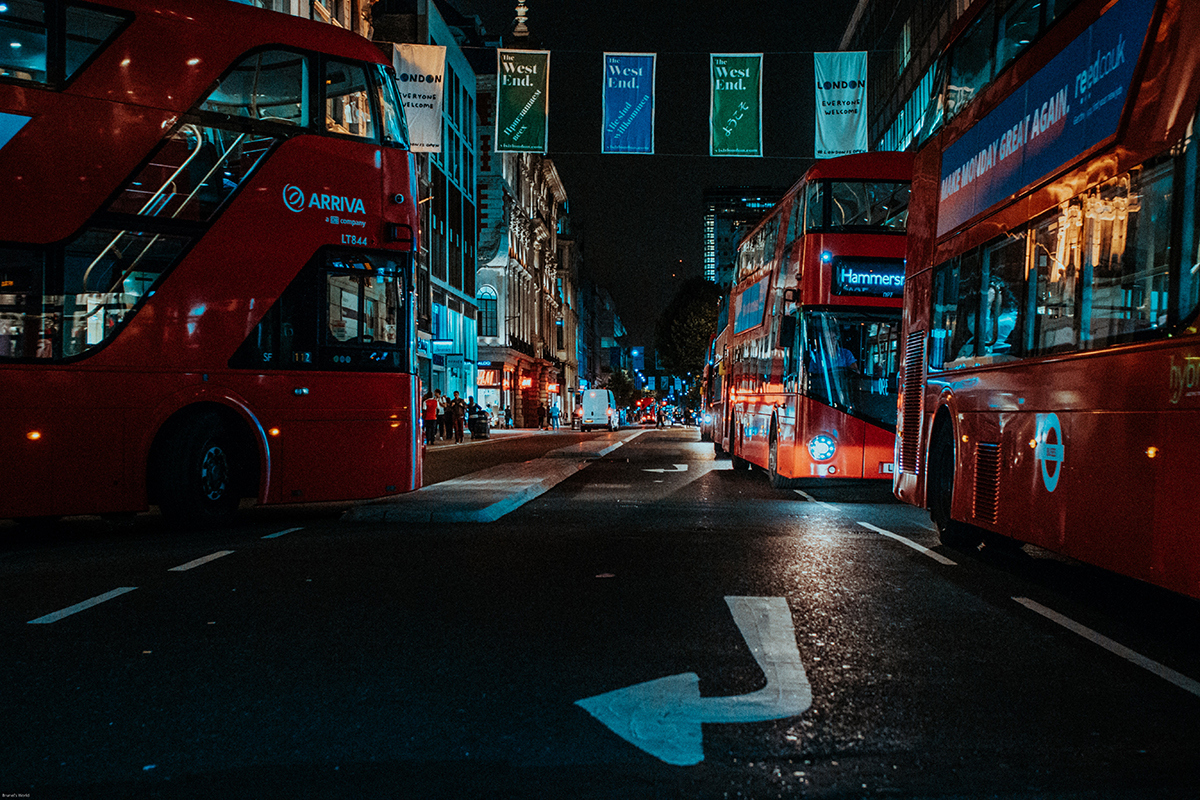
Transport After Dark
August 26, 2019 — The Big Picture
Every morning millions of city dwellers wake up unaware of the legions of hard-working citizens that keep our cities moving, clean, safe, and maintained at night. For many of these workers that help make our cities hum while most of us are sleeping, their movement is far from seamless or easy [1], [2].
While some challenges are similar to those of their day time colleagues, many are amplified, such as the simple ability to get to and from work. These nightly mobility challenges come in the shape of time, money, safety, and access [3]. All of which can have a significant impact on one’s quality of life. These challenges are magnified for those commuting in from the outer limits or outside of city limits. In many cases, lower-income workers find housing closer to their jobs financially out of reach, and more vulnerable populations, like women, often face increased safety risks.
For example, while many cities have made great strides in increasing public transportation frequency and capacity, they often fall short at night, providing little to no transit at critical times during night worker commutes. A missed train or bus connection or a route deviation for any unplanned need by a night-shift worker can massively impact the night commute. In short, a night-shift worker might spend significantly more time commuting on the same route as their daytime counterparts. Concurrently, for safety, the worker may have to pay for more expensive alternatives that avoid the risks of walking, cycling, and public transit [4].
Assuming there are options, workers still must navigate the oft-discussed first and last miles of the mobility equation. This travel could require walking through more dangerous or poorly lit areas making many of today’s micro-mobility solutions designed to address last mile issues less feasible. In a recent move, Atlanta put a curfew on scooters operating after dark prompted by recent fatalities involving scooters. Even if other cities don’t follow suit, poorly lit areas, and unkempt roads and sidewalks make many of these modes less safe at night [5].
To compensate for these time, access, and safety obstacles, many nightly commuters inevitably take more costly alternatives such as taxis or ride-hailing options. Similar to what has been labeled as the Pink Tax on Transportation in NYC by the Rudin Center for Transportation at New York University, night workers face similar challenges on cost. In some cases, night shift workers spend $20 or $30 more for the same trips than if they were to take them during peak hours.
These challenges are certainly not new, but in a golden age of new mobility we must put our heads together and reframe the problem explicitly to find solutions for those committed to keeping our cities running at night. What would it take to reimagine what public or employer-provided transportation looks like after dark? Should cities require more from new mobility operators such as on-demand shuttles, TNCs, and carshare to add less profitable or subsidized options during the night in exchange for higher capacity during the day? Can Transportation Management Associations, corporations, neighboring districts, and community groups engage in more economy of scale models? How would rethinking shared ownership of private vehicles play a meaningful role? What could we learn from cities like New York, Copenhagen, and Tokyo that already operate a more equitable mobility ecosystem at night in relation to the day?
As cities continue to undergo a resurgence, it is essential to consider in the upfront planning and design stages what is needed to keep the city, and more importantly, the people, safely moving long after the sun goes down.
1. Lee, M. L., Howard, M. E., Horrey, W. J., Liang, Y., Anderson, C., Shreeve, M. S., . . . Czeisler, C. A. (2016). High risk of near-crash driving events following night-shift work. Proceedings of the National Academy of Sciences, 113(1), 176-181. doi: 10.1073/pnas.1510383112
2. Plyushteva, A. (2019). Commuting and the urban night: nocturnal mobilities in tourism and hospitality work. Journal of Policy Research in Tourism, Leisure and Events, 11(3), 407-421. doi: 10.1080/19407963.2018.1556673
3. Schwendinger, L. (2019, August 21, 2019). [Communication on nighttime travel and commuting challenges].
4. Branion-Calles, M., Nelson, T., & Winters, M. (2017). Comparing Crowdsourced Near-Miss and Collision Cycling Data and Official Bike Safety Reporting. Transportation Research Record, 2662(1), 1-11. doi: 10.3141/2662-01
5. Unwin, J., & Fotios, S. (2011). Does lighting contribute to the reassurance of pedestrians at night-time in residential roads. Ingineria Illuminatului, 13(2), 22-44.